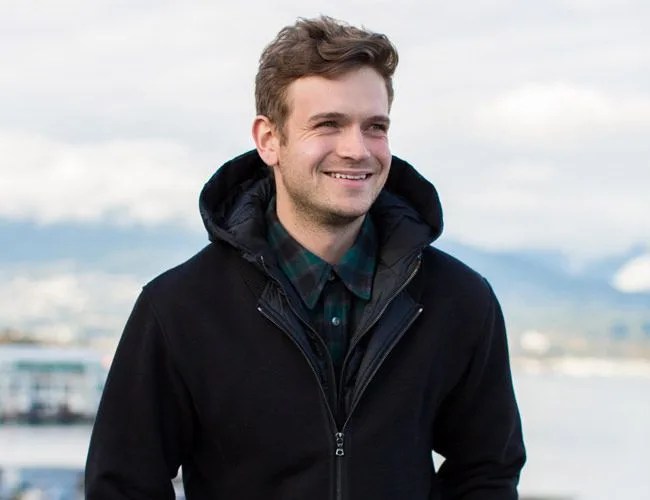JJ Wilson is the son of Chip Wilson, founder of Lululemon. JJ, along with Chip’s wife, Shannon, co-founded Kit and Ace, a brand of high-end casual clothing focusing on “technical cashmere,” meaning clothing made with 10 percent cashmere (on average) for comfort and prestige, yet hearty enough to handle what JJ frequently refers to as the “full-contact life” — an active lifestyle of gym to work to meeting to work to dinner. The clothes can also be machine washed, a major plus.
“I was looking for everything that was in my athletic apparel, but in clothing that I was actually wearing for my real life,” JJ told me as we discussed his year-and-a-half-old company in the lobby of Vancouver’s Rosewood Hotel Georgia. Earlier that day, we visited the company’s headquarters, an open-concept office with large windows and all the markings of a contemporary West Coast startup — big kitchen spaces, walls covered in inspirational quotes, plenty of available meeting spaces, employee goals framed on the walls. The Kit and Ace line is designed and prototyped here, then made overseas. JJ, Shannon, and Chip have three adjacent desks that look out on Jonathan Rodgers Park, though they’re rarely all in the office at the same time.
Kit and Ace is funded by the Wilsons, and the company is free to follow its own compass in terms of culture and values, which fall close to the overarching themes of the Wilson family — and that same initiative that drove Lululemon to global success. In talking with JJ — who is affable, buoyant, and beams an energetic optimism that seems innate beyond his youth (he’s 27) — it became clear that this fledgling line is focused not only on the concept of the clothing, but the concept of brand as identifier, working toward the same kind of appeal that garnered Lululemon’s cultish draw. How he’s implementing that into clothing made for the active lifestyle but not physical activities — “Not for Yoga” was the brand’s winter campaign — shows insight into the ways a brand can resonate with the demands of the contemporary consumer.
Q: So let’s start with the vision statement. The statement is to elevate the world from mediocrity to greatness. How does a clothing company do that?
A: Elevating the world from mediocrity to greatness is actually a family vision statement for how we operate. The intention behind that is that in all of our businesses we’re actually furthering the world and having purpose in what we’re creating. I think that’s just how we know to how to run and operate businesses; when we know it’s about making the world a better place, we’re more successful and we have better product.
Q: Right, so you are putting in the hard work to think about how to make someone’s clothing better, so that they can be better and more productive?
A: Exactly, and it was the same intention with Lululemon from the onset. The product we were providing was incentivizing people to go and work out, and as such encouraged them to live longer, healthier lives. And there’s no point in us changing what we set out to do there with how we created with Kit and Ace. This time, it’s a lot about adding functional properties that show we value people’s time.
Q: What are some of the things you work on in development?
A: So we’ll actually test how long it takes someone to access his cell phone. We have a two-ring cell-phone pocket promise — if it rings twice, you should be able to get it. We are also looking at how quickly you can undo your buttons, we’re looking at machine washability, machine dry-ability — those are huge for us. We also make seam considerations, making sure the seams aren’t anywhere that’s going to cause you to have irritation, and then also fabric properties — we don’t want it to bend, we don’t want it pill, we don’t want it to stretch out, we want the fabric to breathe.
Even bigger than that for us, it’s also about the omni-channel retail experience. We’re still not where I think we need to be, but we’ve done a lot in a year and half. This means, like, how quickly can we value someone’s time at getting them through the point-of-sale? How quickly can they get through fits? How quickly can they get online and access what they want? How quickly can they re-order a core product that they love?
